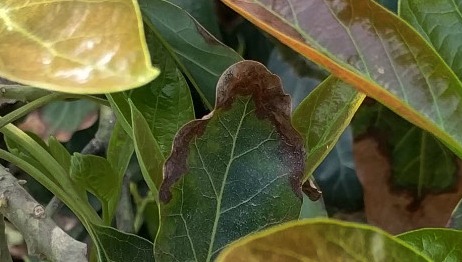No garden, no yard, no enough space? Houseplants can be the best solution for you. Most of them are easy to care for and are able to survive heat, sun or forgetfulness / excess water. Having plants in your home is the big trend of the moment! Besides their depolluting abilities, they transform your home into a place of well-being and positive waves.
These houseplants can of course encounter problems related to their health and well-being. Brown leaf tips are a common problem with indoor plants. Lets find out why leaves can have brown tips and how to prevent this from happening.
CAUSES AND SOLUTIONS
1. WATER LACK
Drying, browning and wilting of the tips of leaves? If these aspects look familiar to you, you may well be under-watering your plant. If you don’t water enough or if you delay too much watering, the leaves will be stressed.
Solution:
- Trim off brown leaves
- Avoid letting houseplants dry out and spray water on the foliage
- Water properly and check your houseplants once or twice a week to see if they require watering
- watering during flowering stage must be done moderately
- Moisten the soil so that the roots have enough water and replant the plants so that their roots have more space to grow
2. OVERWATERING
Overwatering is one of the most common causes of indoor plant problems. When the soil is still wet, the roots begin to die. If the roots die, less water will go to the foliage and it is always the tip of the leaf that will scoop first, causing its death.
Solution:
- Trim off brown leaves
- Apply the golden rule of watering: always wait until the soil is dry before watering again
3. OVERLY DRY AIR
Dry air and low humidity conditions can cause leaf tips to burn. This is especially a problem in heated homes during the cold months of the year. The leaf loses more water by sweating to compensate. In this case, insufficient water goes to the tip of the leaf causing its death.
Solution:
- Trim off any dried out leaves
- Check the temperature and regulate the atmospheric humidity of your interior
- Move plants away from heaters
- Set plants on a dish full of pebbles, and put a layer of water in the pebbles
4. PESTS AND DISEASE
There are many pests that can infest your houseplants, with scale, mealybugs, spidermites and aphids being some of the most common. Fungus can also attack the roots of your plants, making it show the signs of over-watering.
Solution:
- Prune back any infested branches of your plant and clip off unsightly brown leaves
- Use organic pesticides
5. SOIL ACIDITY (pH)
If you are looking for how to reduce soil acidity, you have to know that many houseplants like an acidic soil, which is a pH of 6.4 to 6.8. Some areas have alkaline water, which makes the soil less acidic over time.
Solution:
- Transplant in fresh soil once a year for most houseplants
- Some more sensitive plants, like African violets, require repotting twice a year
- Use an organic, acid-based fertilizer to keep the soil on the acidic side
6. TOO MUCH FERTILIZER
Over-fertilizing damages roots, which in turn affects their ability to take in water, making them act thirsty. Fertilizers contain minerals and the minerals surplus rises into the leaves and concentrates in the tip.
Solution:
- Fertilize correctly, especially during the growing season
- Ovoid salt stress and use an organic fertilizer rather than a chemical one
7. CHEMICAL BURN
Some substances like Chlorine, Fluoride and Sodium are toxic for houseplants and may come from water or soil. They are absorbed by these plants and accumulated in leaves tips which lead to their browning.
Solution:
- Use water to which no chlorine has been added: rainwater, distilled water…
- Avoid using softened water, as it’s very high in salts
Finally, to keep the aesthetic aspect of your indoor plants, remove with scissors only the dead part of the leaf. The best way to do this is to cut the sheet to recreate the effect of a tip. Make sure to use sharp scissors.
